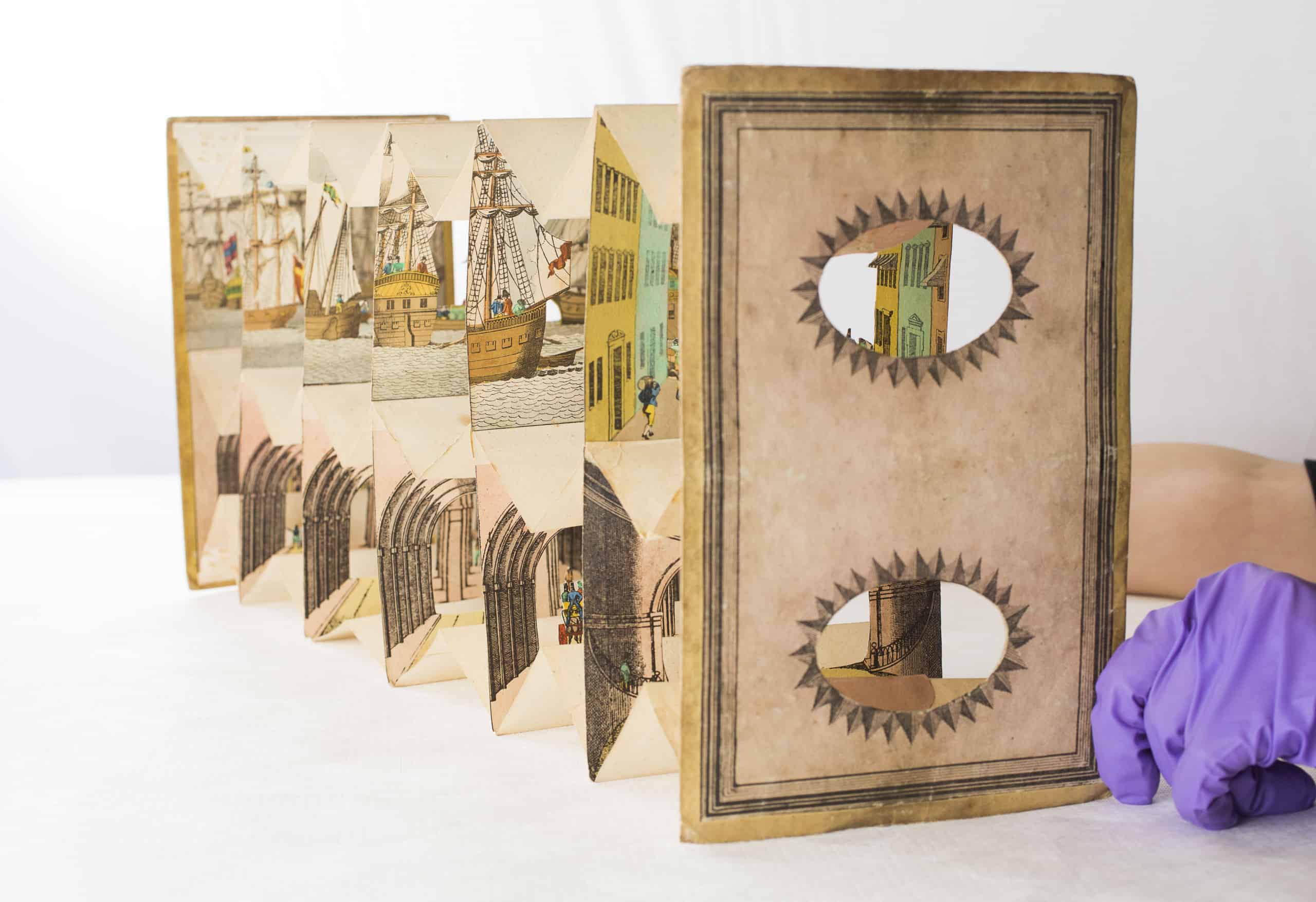- This delicate double peepshow was probably sold to raise both money and interest in the construction of the Thames Tunnel. Marc Brunel, father of Isambard Kingdom Brunel, designed the tunnel to link the two sides of London, separated by the River Thames, together.
- Published around 1830 in Germany and produced out of paper, the peepshow gives an idealised view of how the tunnel would look when finished. It shows views from both inside the Thames Tunnel and what is taking place on the river above.
- Looking through the top peephole gives the viewer a chance to see life on the river, full of boats of all different sizes carrying goods and people. The bottom peephole shows horse drawn carriages and people strolling through the Thames Tunnel; it is shown to be less busy than the river above.
- When finished the real Thames Tunnel was nearly 400 metres long; it is still being used today as part of the London Overground Train network.
The Story
The Thames Tunnel
Marc Brunel, Isambard Kingdom Brunel’s father, wanted to create a tunnel under the River Thames. The city’s bridges were becoming very congested, so a tunnel that would allow horses and wagons to pass under the river was suggested as a solution. At this time no one had successfully built such a long tunnel under a river, and many people thought that it would be impossible. The Thames river bed was soft, making it difficult to hold the structure of the tunnel as it was built, and the shale ground they were digging through leaked water. Marc Brunel designed a “tunnelling shield” to help the builders construct the tunnel but progress was very slow and conditions for the workers were terrible.
In 1826 the chief engineer, William Armstrong, left the project due to illness, Isambard Kingdom Brunel was promoted to chief engineer, he was only 20 years old. Brunel would spend days at a time underground, working incredibly long hours, sometimes up to 30 hours per shift!
There were a number of floods during the building of the tunnel and Isambard Kingdom Brunel was seriously hurt during a flood in 1828; he had to leave the project to recover but Marc Brunel continued to work on the tunnel. After nearly 20 years of hard work and setbacks, including a 6-year break when the project was stopped due to a lack of money, the tunnel was finally opened in 1843. There was so much public interest in the tunnel around 50,000 people visited in the first few days alone. Stalls selling souvenirs lined the tunnel allowing visitors to buy mementos of their trip.
Due to a lack of money the ramp to let horse drawn carriages enter the Thames Tunnel was never finished, meaning that carriages never travelled through the tunnel. Without access for horses and carts, the tunnel did not help reduce congestion on the city’s bridges or river.



